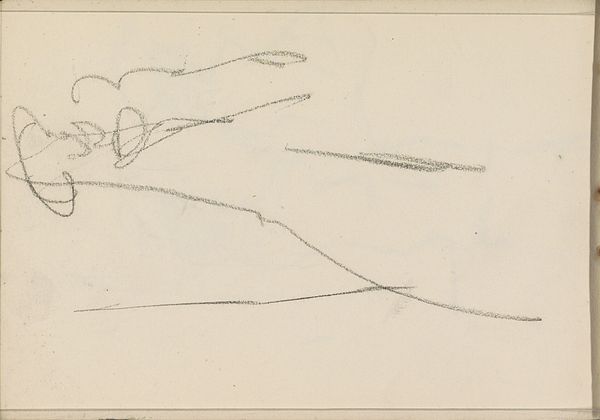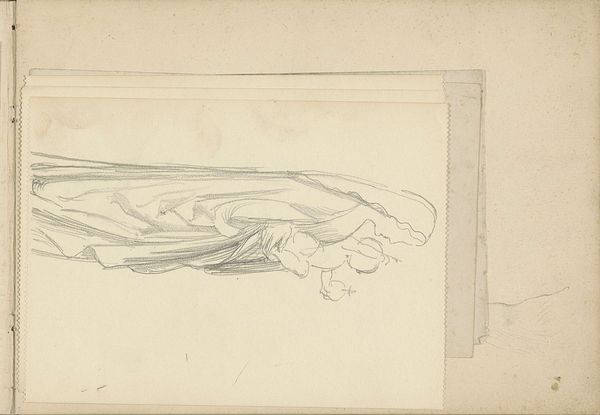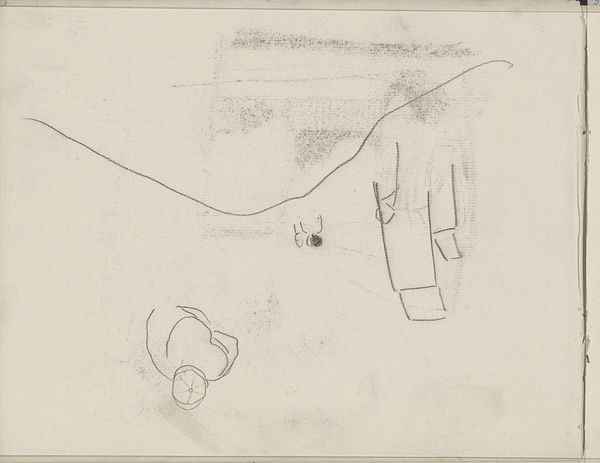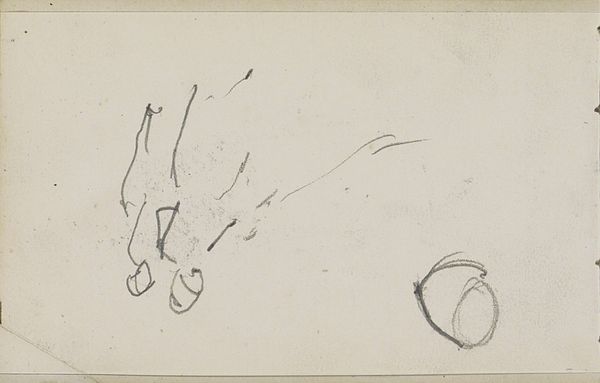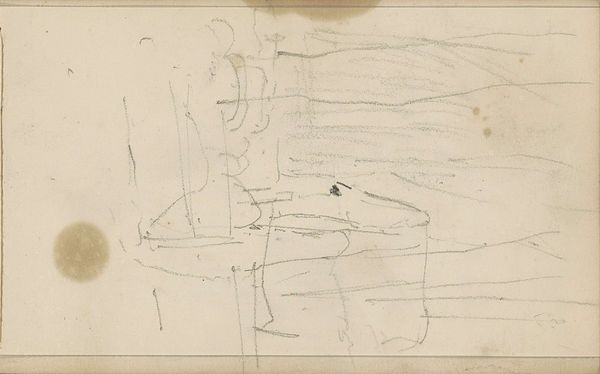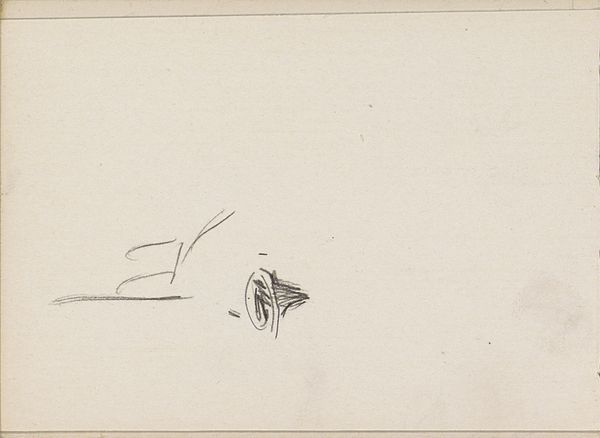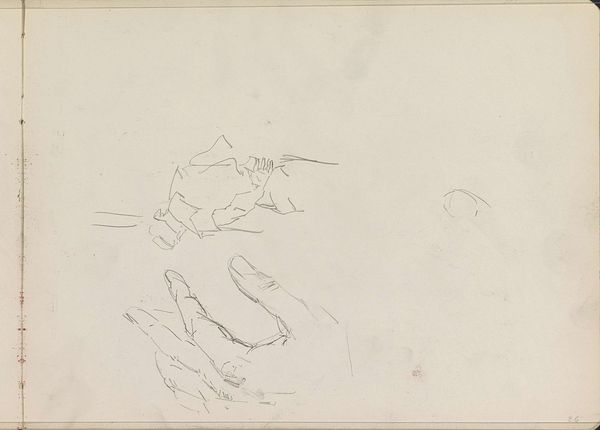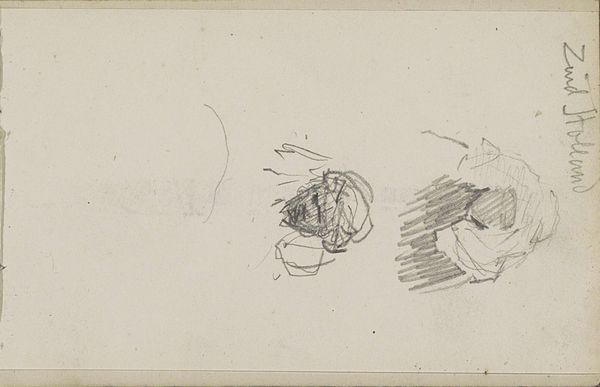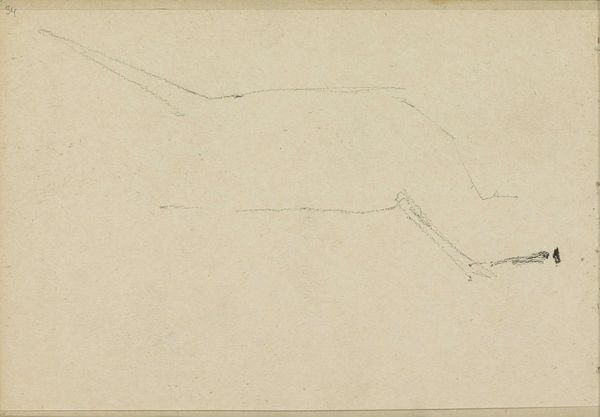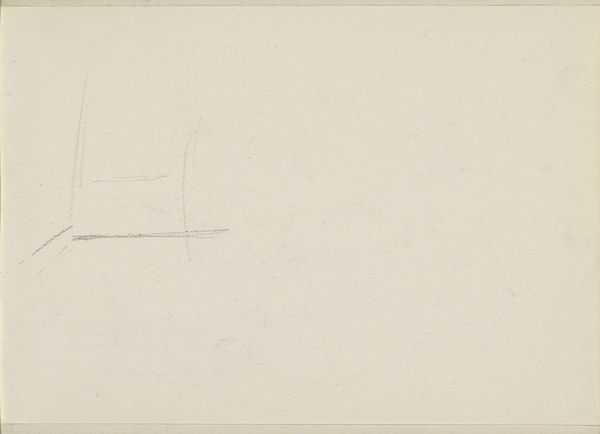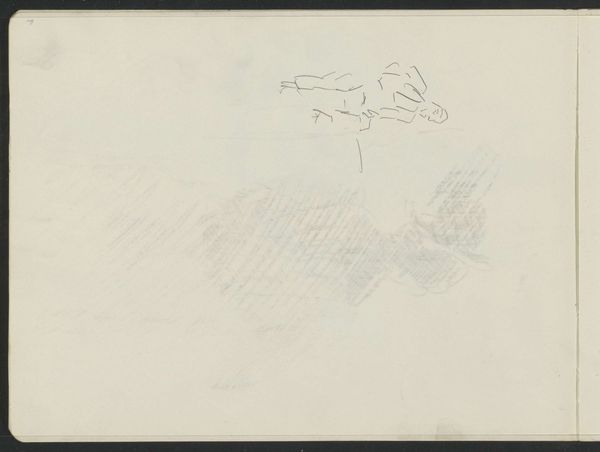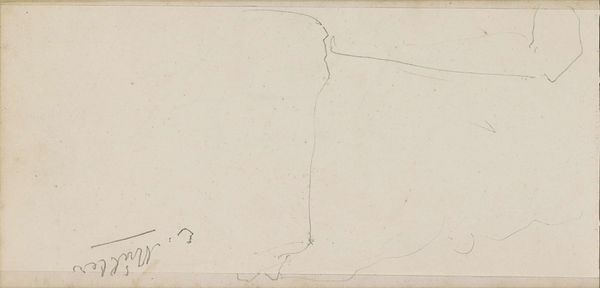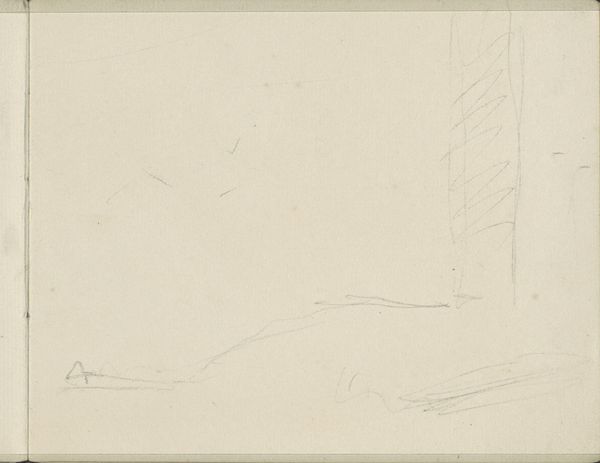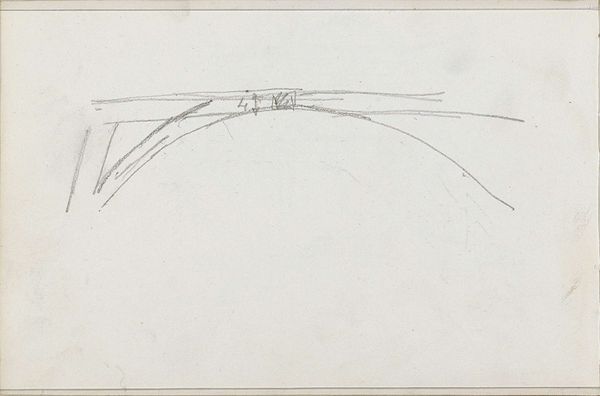
drawing, paper, pencil
#
portrait
#
drawing
#
pencil sketch
#
figuration
#
paper
#
form
#
pencil
#
line
#
sketchbook drawing
Copyright: Rijks Museum: Open Domain
Curator: The work before us, "Hand," is a pencil drawing on paper, attributed to Antoon Derkinderen and thought to have been created sometime between 1869 and 1925. What are your initial impressions? Editor: Spare. Vulnerable, even. The hand appears to float against the starkness of the paper, alone, ungrounded. It feels indicative of a deeper disconnection. Curator: Interesting. Note the deliberate linearity – the artist uses primarily contour lines to define the hand's form. There’s very little shading or modeling to create volume. It’s an exercise in pure form, relying on the economy of line to convey shape and suggest movement. Editor: And what does that signify in its time? With its lack of context, this single hand becomes a potent symbol of the working class, of labor exploited and often detached from its human cost during industrialization. A lone hand speaks to that dissociation. Curator: I see your point about industrialization, but I find more compelling how the drawing showcases Derkinderen’s mastery of draftsmanship. He captures the subtle curvature of the wrist and the delicate articulation of the fingers with incredible efficiency. The form itself embodies an elegance... a beauty inherent in pure, unadorned line. Editor: Elegance, perhaps, but isn't there an unsettling absence of power? This is not a clenched fist of resistance but an open hand, seemingly waiting or perhaps even pleading. Considering the historical context, particularly the social unrest during the period Derkinderen was active, it suggests complicity, or powerlessness. Curator: You’re reading into its sociopolitical implications. Couldn't it simply be a study, a formal investigation into the complexities of human anatomy? A sketchbook drawing to develop technical skill? Editor: And are artistic skills developed outside of broader social and political landscapes? That presumed innocence serves particular ideologies. To me, it screams the stories of unacknowledged labor from that era. Curator: Well, whether Derkinderen intended social commentary, his emphasis on contour certainly directs the eye with tremendous skill. Editor: Agreed. And through that guided view, one hopefully gains insight beyond formalism. Thank you for illuminating this stark piece.
Comments
No comments
Be the first to comment and join the conversation on the ultimate creative platform.
